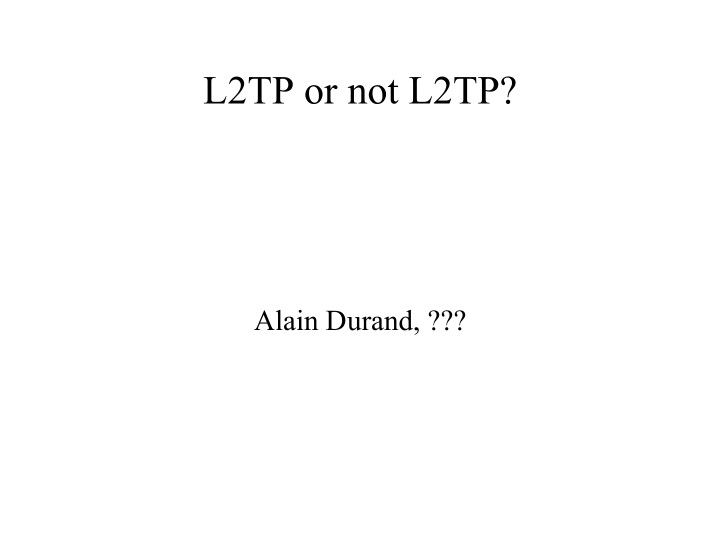



L2TP or not L2TP? Alain Durand, ???
L2TP Configuration Latency (in authenticated mode) ● L2TP (8), PPP+CHAP (11), DHCPv6 (4) = 23 pkts ● Idea: collapse all those layers into 1 protocol with minimum packet exchange. E.g.: – TSP: ● 10 packets (digest-md5 auth) – TSP-lite: ● 6 is possible – STEP: ● 4 is possible
L2TP Configuration Latency (in non-authenticated mode) ● L2TP (8), PPP (8), DHCPv6 (2) = 18 pkts ● Idea: collapse all those layers into 1 protocol with minimum packet exchange. E.g.: – TSP: ● 7 packets (anonymous) – TSP-lite: ● 2 is possible, 3 with return reachability test – STEP: ● 2 is possible
L2TP Encapsulation Overhead ● IPv6 over PPP (4)/L2TP (8)/UDP (8)/IPv4 (20) = 40 bytes ● Idea: collapse into: – IPv6/IPv4 = 20 bytes or IPv6/UDP/IPv4 = 28 bytes ● Case sudy: VoIP over radio link – VoIP payload = 44 bytes, radio overhead = 12 bytes – Total packet size: ● With L2TP encapsulation: 44+8+40+40 +12 = 144 bytes ● With IPv6/IPv4 encapsulation: 44+8+40+20+12 = 124 bytes (16% less)
What else will change by collapsing the layers of L2TP? ● PPP is doing MTU adaptation ● L2TP is doing the management of the tunnel (e.g. keep alive) ● L2TP can make sure packets are ordered ● If we do not use L2TP, the node may have to do all that.
Recommend
More recommend